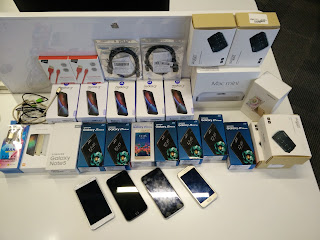I spoke about "Build your own MAD-LAB - for Mobile Test Automation for CD" at Agile India 2018.
Though I have spoken on this similar topic answering the question - "Why I needed to build my own MAD-LAB?" before at vodQA in July 2017 at Vuclip, quite a few things have changed since then.
Knowing the value of "being agile", a day before my scheduled talk in Agile India 2018, I decided to revamp the content substantially. To add to my challenges, (and thanks to "testing" my slides before the talk in the conference room), I also realised the slide size format I was using is incorrect, and also the projector was not "setup / configured" correctly, making all my slide colours go haywire.
So after last 10 minutes of scrambling before the talk time, I managed to get this done correctly (at least that is what I think now in hindsight.
Moral of the above story - do a test / dry-run of your slides before your audience comes in!
That said, here is the abstract of the talk.
The slides are part of the discussion on the Why, What and How I built my own MAD-LAB (Mobile Automation Devices LAB). The discussion also includes the Automation Strategy, Tech Stack, Capabilities & Features of MAD-LAB and the learnings from successful & failed experiments in the journey.
Though I have spoken on this similar topic answering the question - "Why I needed to build my own MAD-LAB?" before at vodQA in July 2017 at Vuclip, quite a few things have changed since then.
Knowing the value of "being agile", a day before my scheduled talk in Agile India 2018, I decided to revamp the content substantially. To add to my challenges, (and thanks to "testing" my slides before the talk in the conference room), I also realised the slide size format I was using is incorrect, and also the projector was not "setup / configured" correctly, making all my slide colours go haywire.
So after last 10 minutes of scrambling before the talk time, I managed to get this done correctly (at least that is what I think now in hindsight.
Moral of the above story - do a test / dry-run of your slides before your audience comes in!
That said, here is the abstract of the talk.
Abstract
In this age of a variety of cloud-based-services for virtual Mobile Test Labs, building a real-(mobile)-device lab for Test Automation is NOT a common thing – it is difficult, high maintenance, expensive! Yet, I had to do it!
The slides are part of the discussion on the Why, What and How I built my own MAD-LAB (Mobile Automation Devices LAB). The discussion also includes the Automation Strategy, Tech Stack, Capabilities & Features of MAD-LAB and the learnings from successful & failed experiments in the journey.














